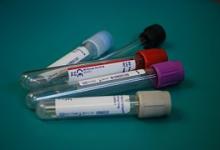Detection, Monitoring & Management of Autoimmune ILD Save

The American Journal of Managed Care has reviewed the approach to patients with interstitial lung disease (ILD); a significant cause of morbidity and mortality in those with systemic autoimmune rheumatic diseases (SARDs), including rheumatoid arthritis (RA), systemic sclerosis (SSc), and idiopathic inflammatory myopathies (IIM).
While recent EULAR guidelines recommend that all CTD-ILD patients be screened with high-resolution CT (HRCT), this remains a judgment call with uncertainty regarding which risk factors should also prompt screening or referral.
Detection
Early detection is key to identifying those at risk for ILD, ILD progression and poor outcomes. Detection is often delayed because ILD may be asymptomatic or present with nonspecific symptoms that are attributed to other autoimmune disease manifestations or comorbidities, commonly resulting in substantial lung function impairment by the time of diagnosis.
Both ACR and EULAR conditionally recommend screening for ILD with HRCT and pulmonary function tests (PFTs). HRCT is preferred over PFTs. The greatest ILD risk is seen with SSc and mixed connective tissue disease (MCTD). RA patients with risk factors should also be screened. High risk includes age, males, smoking, seropositivity, elevated inflammatory markers and high disease activity.
Emerging evidence supports lung ultrasound as a potential screening tool, with studies showing 99% sensitivity and 96% specificity for detecting ILD compared to HRCT. However, this technique requires specialized training and lacks formal guidelines from professional associations.
Monitoring
Monitoring is necessary as up to 30% of CTD-ILD will not progress and the rate of decline in others varies from slow decline to rapid progression. Moreover, ILD progression may not mirror the activity of the underlying autoimmune disease. The ACR guidelines recommend monitoring with PFTs every 3-6 months for myositis-ILD or SSc-ILD and every 3-12 months for ILD associated with rheumatoid arthritis, Sjögren disease, or MCTD during the first year.
Clinical markers of progression include declining FVC or diffusing capacity for carbon monoxide (DLCO) and increasing extent of ILD on HRCT, which correlate with increased mortality risk. A decline in FVC of ≥10% over time represents a significant poor prognostic finding. In a retrospective analysis of data from 137 patients with RA-ILD followed for a median of 5 years, a decline in FVC (% predicted) of at least 10% was associated with a 2.5-fold increased risk of mortality (P <.0001).
Monitoring should include PFTs, HRCT, symptom assessments and exercise tolerance tests (e.g., 6-minute walk testing). HRCT should be repeated as clinically indicated.
Management
Management of ILD associated with autoimmune diseases is individualized and based on the underlying autoimmune disease type, ILD severity and progression, risk factors, comorbidities, and patient preferences. Close collaboration between pulmonologists and rheumatologists is essential.
in addition to supportive care, treatment typically involves immunosuppressant and/or antifibrotic therapies. Glucocorticoids are often used, although their long-term efficacy has not been conclusively demonstrated. Mycophenolate mofetil and rituximab are also frequently employed, particularly for nonspecific interstitial pneumonia (NSIP) patterns and RA-related ILD. The ultimate decision on treatment should be a shared process between the clinician and the patient, considering individual needs and preferences.
In the US, the only drug approved for the treatment of autoimmune disease–associated ILDs (other than SSc-ILD) is nintedanib, which is approved for the treatment of progressive fibrosing ILDs (PPF) irrespective of etiology. In the SENSCIS trial, nintedanib reduced FVC decline rate by 44% over 52 weeks compared to placebo. Tocilizumab has also received FDA approval for SSc-ILD based on the focuSSced trial results.
For progressive fibrosing ILDs, nintedanib received conditional recommendations in clinical practice guidelines, with the INBUILD trial demonstrating a 57% reduction in FVC decline rate versus placebo across different ILD diagnoses.










If you are a health practitioner, you may Login/Register to comment.
Due to the nature of these comment forums, only health practitioners are allowed to comment at this time.